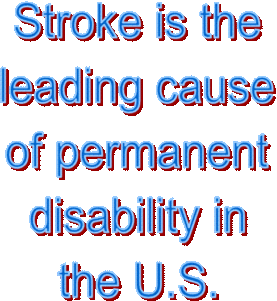When Jill was 36 and pregnant the problems began: many transient ischemic attacks and a racing heart – all repeatedly misdiagnosed over seven years.
I am a Doctor of Physical Therapy, athletic trainer and certified strength and conditioning coach; was actively working in all three roles in addition to managing the physical therapy clinic that I owned when this story began.
I had lived a very healthy and active lifestyle, running distances up to marathons and working out.
In May of 2013, I was 36 and five months pregnant with my third child when I experienced sudden heart racing.
I ended up in the ER later that night when the symptoms continued. After a CT scan to rule out a pulmonary embolism, I was diagnosed with asthma and sent home with an inhaler.
Three days later, my heart was racing again with lightheadness and near-fainting right in my OB’s office, so I was hospitalized for further work-up.
The cardiologist said my heart rate wasn’t above 100, so I was not a cardiac patient. Thankfully the OB gave me Labetolol to help keep my heart rate better controlled throughout the remainder of my pregnancy. No diagnosis was given.
Five months after I gave birth to Adelyn, I tried weaning off the Labetolol slowly, as I was told the heart rhythm issue would resolve after pregnancy. Local cardiologists ran a treadmill stress test which I passed with ease.
They did not give any diagnosis and told me to continue on the Labetolol. That summer I visited a doctor at Mayo Clinic who was a specialist in pregnancy-related heart failure.
She ordered many tests (EKG, echo, CPET treadmill stress test, Holter monitor and endopat research test for microvascular heart disease), and while there were a few things off like my heart rate recovery and a mildly enlarged left atrium and ventricle, she said I was fine.
Later that month I had a physical with my primary physician, and she said she’d diagnose me with anxiety if I kept bringing up my heart issue.
Later that month I had an alarming symptom: sudden less sensation in my left arm, leg and face, and weakness in those areas.
I didn’t go to the ER because I knew that if the ER saw that I had been to Mayo — and a Mayo doctor thought I was fine — nothing would be done.
On New Year’s Eve 2014, I noticed my heart suddenly racing.
Seven hours later, I had a sudden onset of left arm and leg weakness, decreased sensation on my left side including my face, fatigue and unilateral neglect.
My husband took me to the ER where they did a Code Stroke work-up with CT scan and MRI (these tests did not show a clot in any vessels).
The neurologist decided not to come in and evaluate me. Five hours later I was given nothing, sent home with a diagnosis of transient ischemic attack (TIA), and told to buy baby aspirin.
A TIA, also known as a mini-stroke, is when a blood clot in the brain temporarily blocks blood flow.
This diagnosis of TIA was actually a mild stroke with residual limitations to this day including limited running due to neural fatigue in my leg, decreased left arm strength and endurance, visual processing limitations, memory issues and reduced balance.

Two weeks after the mild stroke, I ended up in the UW Health ER in Madison, and they performed the diffusion weighted MRI to further delineate whether a stroke had occurred, and the test was negative.
I had a TIA that very same night and entered the ER, but by night’s end I was diagnosed with conversion disorder [having symptoms without a physical or injurious explanation; suspected cause is psychological].
I saw a dozen neurologists in the years that followed and was given diagnoses including complex migraine (even though I’d never had any headaches), hemiplegic migraine, conversion disorder and functional disorder.
However, I also learned from another brain CT scan that I had congenital narrowing in an artery in the right hemisphere of my brain, reducing blood flow by 50%, that would correlate perfectly with the left sided stroke symptoms.

Knowing that the arrhythmia and stroke had to be logically connected, I sought further help with the arrhythmia.
I visited an electrophysiologist (EP) two months after the mild stroke, who mentioned for the first time that I likely had inappropriate sinus tachycardia.
But after another Holter test’s average heart rate didn’t look impressive enough, he refused to see me again and said my heart was normal.
I visited another electrophysiologist and was given a tilt test and an EP study: both negative.
Finally, I found an article on inappropriate sinus tachycardia (IST) in a heart journal.
I visited the author and was relieved to finally get that diagnosis, and he offered Ivabradine, a new selective heart rate reducing drug. This medication did not solve the problem.
He implanted a loop recorder that detected IST episodes occurring at all times.
As I read further, I saw that an SA node ablation was an option for uncontrolled IST. My EP in Iowa became angry when I asked about the ablation procedure, saying it would make my life worse.
It took another five consults over five months in Chicago, New York and Texas to find an EP who was agreeable to performing the ablation.
In late 2017 during my SA node ablation, the electrophysiologist accidentally stimulated atrial fibrillation.
It continued for 13 minutes before he decided to cardiovert the arrhythmia so he could continue the procedure.
This indicated that I did indeed have the precursors to atrial fibrillation, and this could be connected to the TIA/stroke issue.
After two more serious TIA/mild stroke events in the same weekend two months later in 2018, I was finally successful in begging a cardiologist to order Eliquis.
When TIA events continued to occur on Eliquis (weakness and decreased sensation on one side of the body – am, leg, face – that would come on all at once), I asked the last neurologist I had seen if I could try baby aspirin with the Eliquis. The neurologist said no.
But I had no other options. So I added baby aspirin. The TIA/stroke episodes disappeared.
Neurologists were continuing to diagnose me with a complex migraine despite the success of Eliquis plus baby aspirin.
In 2020 I was then scheduled for heart surgery (complication from the ablation; heart failure from constrictive pericarditis). To prevent hemorrhaging during surgery I was taken off the Eliquis. As a result I had TIA.
Finally, my local neurologist agreed that I had had, indeed, a mild stroke five years ago.
What could I have done differently?
Well, first, have a good primary doctor you can trust prior to any major medical problems happening.
Also, looking back, I knew not to leave symptoms unexplained. But when you’ve already been to Mayo Clinic, where do you go from there?
You need a specialist in what you have wrong with you, which is very difficult at the beginning of a problem when you have no idea what you have.
I did not wait for referrals from primary care, as I did not have a good primary care physician at the time.
Do your homework utilizing reputable websites, and then work through the process of testing to rule out all of the other diagnoses until you find your precise diagnosis.
Once I found a specialist for IST, I felt relieved. But it took much research on my end because the specialist never even told me about ablation.
Finally, finding the answer to the TIA’s and mild strokes involved using my own medical background to take the test results I had and dig into research to answer the problem.
Research is on homogenous causes (one single cause) of stroke, whereas I learned that I had three underlying contributors to my elevated TIA/stroke risk:
- Blood that clots easily
- Born with an anomalous brain artery
- Atrial arrhythmia


 Dr. Jill Murphy owns
Dr. Jill Murphy owns 























